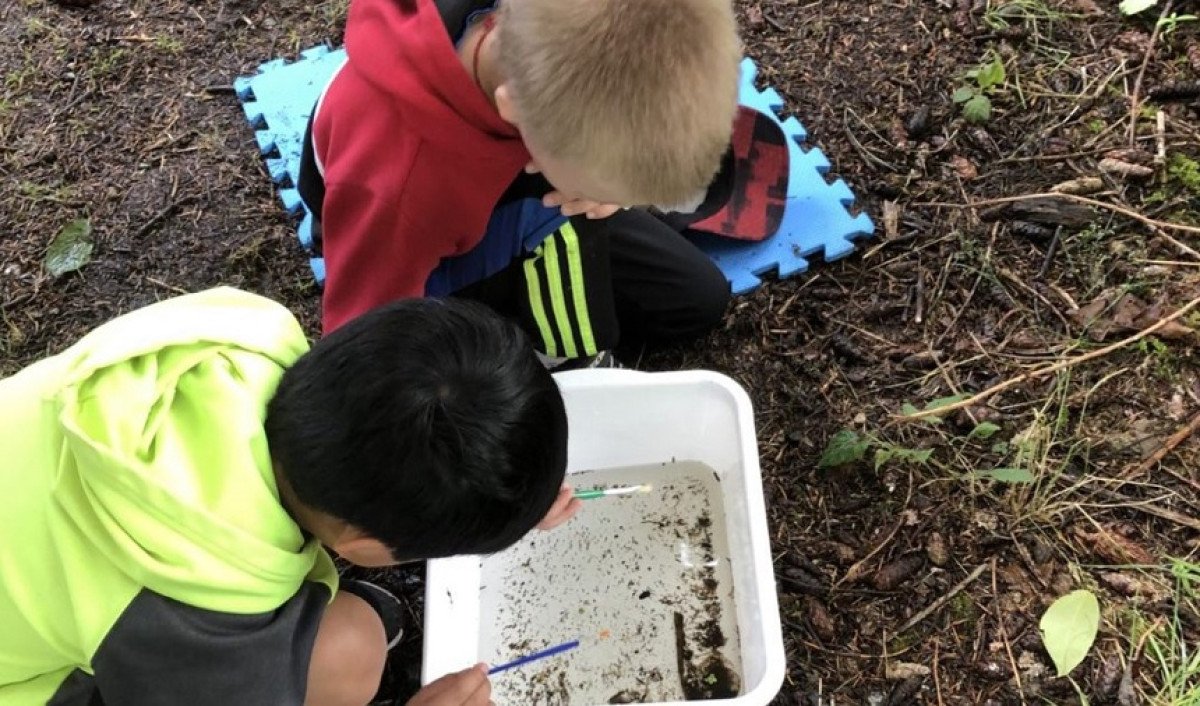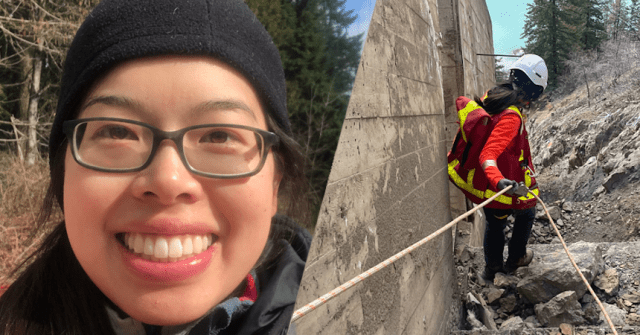As we near World Water Day, a look at an innovative Nanaimo program
When kids get their hands in the mud, more than dirt sinks in. And when they're asked to think like a fish, their interest flows.
In 2021, the Nanaimo and Area Land Trust (NALT) introduced outdoor lessons via pilot projects at two elementary schools: Coal Tyee Elementary and the Nisaika Kum'tuks Learning Centre, a student-centered, Indigenous-infused learning environment for students in grades K-7. And as funding for the program increases, expect more schools to jump in.
"At Nisaika Kum'tuks, students visiting Cat Stream, an urban waterway, are asked questions like, 'is this suitable habitat for salmonids?" says Linda Boorymans, stewardship coordinator for the NALT. "We ask them to think from the perspective of a fish. If you're a fish, what do you need? Do you want the water warm, or do you want it cool? Do you want it clear? "
"Even in kindergarten, kids can quickly pick up on how to think like a fish. And they start to see an ecosystem, where before it was just a place they liked to play."
On the runup to World Water Day on March 22, the NALT's School Water Stewards program is an example of how outdoor learning can ignite student interest in a way that classroom learning can't. It's an approach supported by the findings of a 2018 Illinois study that found lessons in nature led to higher student engagement that was sustained even after the students returned to the classroom.
Teachers in the study found that the rate of "redirects" – instances where the teacher needed to interrupt the flow of instruction to redirect students' attention – was cut almost in half after a lesson in nature. Normally, these redirects happen every 3.5 minutes of instruction. After a nature lesson, the study found teachers were able to teach for 6.5 minutes without interruption, on average.
"It's no surprise that place-based learning and being outdoors is really the best way for kids to learn," says Boorymans.
"A big part of this is that kids feel a connection to a place and to natural space, and through that, they start to care. From there, you can start to build stewardship values."
Age-specific lesson plans and easy access for students
According to Boorymans, the NALT designed the School Water Stewards program to avoid the barriers that can prevent other outdoor study programs from flourishing.
The program provides six lessons to students from K to grade 7, each tailored to be age appropriate. The program's secret sauce, however, is that it makes it a priority to make these outdoor learning spaces within walking distance of the school.
"We don't want the typical barriers of transportation, cost, and lesson delivery or support for outdoor learning," says Boorymans. "We bring the students to a marsh, wetland, stream or whatever water feature is within walking distance, so they can access it without having the cost of transportation. It also gives teachers the opportunity that once they get comfortable being outdoors with these classes in these spaces that they can visit it as many times as they want on their own."
NALT is seeking funding so that they can continue to offer their schools program for free to schools in districts 68 and 69. Study areas include:
- Invasive plant mapping and removal
- Storm drain marking
- Riparian planting and native plant propagation
- Amphibian monitoring
- Water quality and/ or hydrology monitoring
- Nest box building
- Salmonid habitat assessments of a reach or section of a local stream.
Go outside, and use Power Smart for Schools activities
Asked what advice she could give to teachers and schools interested in introducing outdoor activities to their students, Boorymans says to start small.
"Just have your students notice the little things," she says. "And BC Hydro has so many great resources that teachers can adopt. A lot of those activities can be done outside of the classroom. You can look at where the water goes when it rains. You don't even need a stream right beside your school to look at where the water goes. How much of our neighbourhood is a hard, impermeable surface, and how much can absorb the water?"
Educational resources for exploring water stewardship
There's a variety of Power Smart for Schools activities to help students understand the links between groundwater, sustainability and Indigenous perspectives on water.
Honouring water (Grades K, 2)
Students explore Indigenous perspectives and discover some of the ways they can honour water using observations and inferences. Some Indigenous activities outlined in the provided slideshow, such as water songs and water walks, can be experienced outdoors if schools are located within walking distance of a water source.
Listen to the water (Grades K, 1)
Play a listening game to help students discover how the sound of water makes them feel. If you're close to an outdoor water source, even a fountain, consider taking this listening experience outdoors.
Mapping our water sources (Grades 5, 7)
Maps are provided of water sources in Prince George and Metro Vancouver, but teachers can find more localized maps for this activity. And if there's a source nearby, the activity could be taken outdoors to make it hyper-local.
Living in a good way with water (Grade 5)
Using Indigenous teachings and perspectives, students develop commitments to living in a good way with water.
Nature connections (Grade 7)
Teachers show a video about First Nations connections to their land and place and then have students think about a special place in nature. Is there a special place outside, near the school, where the class could visit?
Sustainability and you (Grades 4-7)
Students explore the concepts of sustainability and stewardship and the relationship between Indigenous communities and the environment. Is there a water source near the school where stewardship is in action, or where it might be required?






